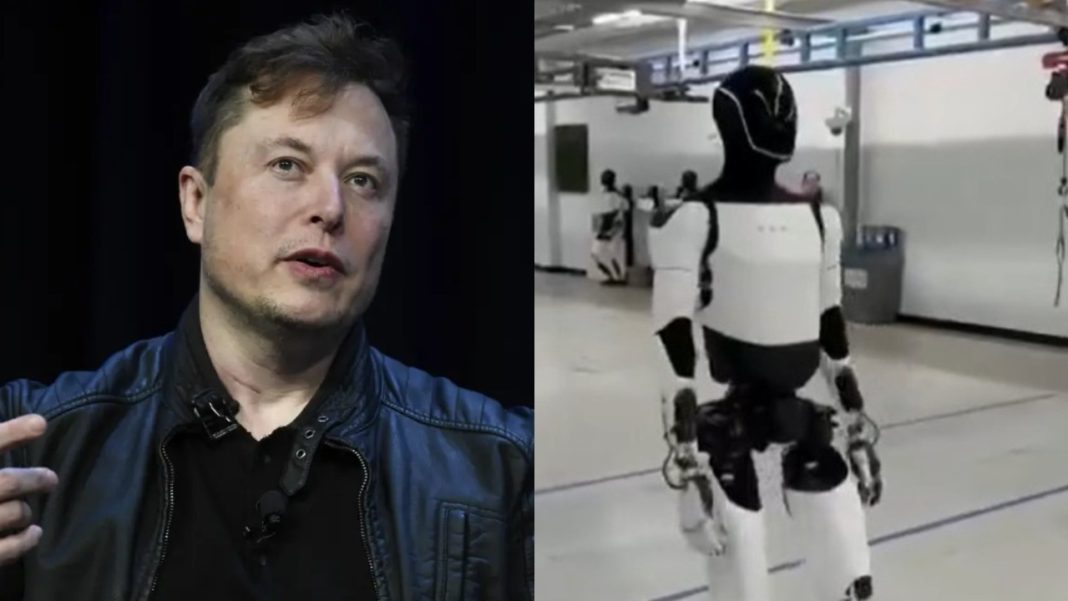Key Takeaways
- Elon Musk predicts human consciousness could be uploaded into Tesla’s Optimus robot within 20 years.
- Optimus is a humanoid robot designed for repetitive tasks, powered by Tesla’s AI.
- Musk claims this technology could end poverty by automating physical labor.
Elon Musk has unveiled a vision where human minds could be uploaded into Tesla’s Optimus robots, potentially within two decades. Speaking at a Tesla shareholder meeting, the billionaire CEO outlined a future where digital copies of human consciousness could reside in robotic bodies.
When questioned about human consciousness in Optimus, Musk responded: “It’s not immediate. But if you say, down the road, would you be able to, say, with a Neuralink, have a snapshot of what is an approximate snapshot of somebody’s mind and then upload that approximate snapshot to an Optimus body? I think that at some point, that technology becomes possible, and it’s probably less than 20 years.”
Despite sounding like science fiction, Musk appeared completely serious about this timeline.
What Is Tesla’s Optimus Robot?
First revealed in 2021, Optimus represents Tesla’s ambitious humanoid robot project. Designed as a fully autonomous, bipedal machine, it aims to handle repetitive or dangerous jobs. Unlike cinematic androids, Optimus maintains a mechanical, futuristic appearance.
Key specifications:
- Height: 5 feet 8 inches
- Weight: 56 kilograms
- Capabilities: Walking, lifting objects, performing household tasks
The robot runs on Tesla’s artificial intelligence system, the same technology powering their self-driving cars. Tesla envisions Optimus evolving from industrial applications to becoming a household assistant.
Musk’s latest comments, however, extend far beyond automation. Through Neuralink, his brain-computer interface company, he believes “mind snapshots” could be uploaded to Optimus bodies.
“Of course you won’t be the same,” Musk acknowledged. “You’ll be a little different because you’ll be in a robot body, and the mental snapshot will not be precise. It’ll probably be pretty close, but not exactly the same.”
He added philosophically: “On the other hand, are you the same person that you were five years ago? Nope. I mean a lot of things have changed, so.”
This perspective left attendees contemplating the possibility of .
Beyond Mind Uploading: Ending Poverty
Musk positions Optimus as a civilizational turning point, claiming it could help “end poverty” by revolutionizing work. He argues that as humanoid robots assume manual and repetitive labor, people can focus on creative and educational pursuits.
Tesla’s long-term goal involves making Optimus affordable for household ownership. Musk describes the project as potentially “more significant than the car business itself.” Successful implementation could see robots handling most physical jobs, reducing costs and boosting global productivity.
Summarizing his vision, Musk stated: “I guess at some point if you want to be uploaded to a robot body, my guess is that becomes possible.”
Whether this represents genuine foresight or another Musk ambition remains uncertain. However, his history of achieving the impossible—from reusable rockets to electric vehicles—means the world pays attention when he speaks.
Currently, Optimus is mastering basic movements and tasks. If Musk’s predictions prove accurate, this robot could fundamentally redefine human existence. The reception to this future—whether exciting or unsettling—will vary individually.




